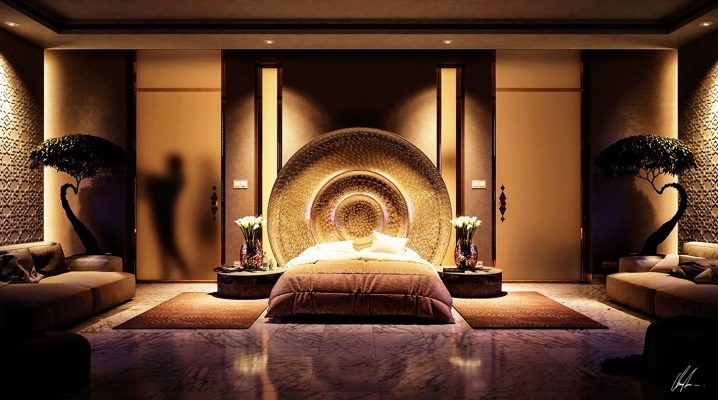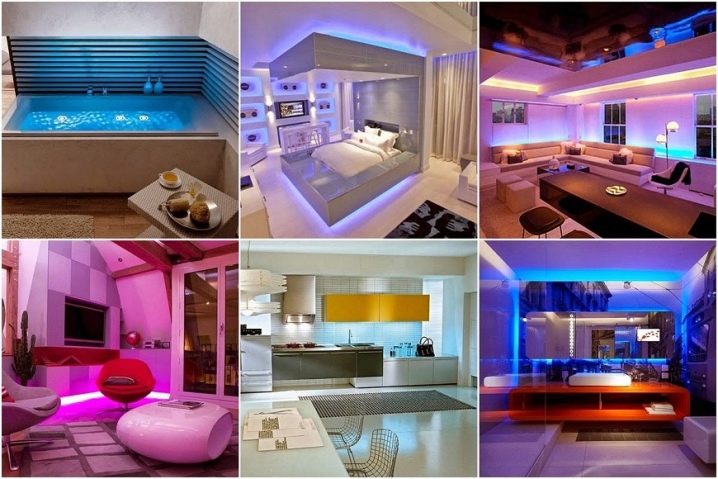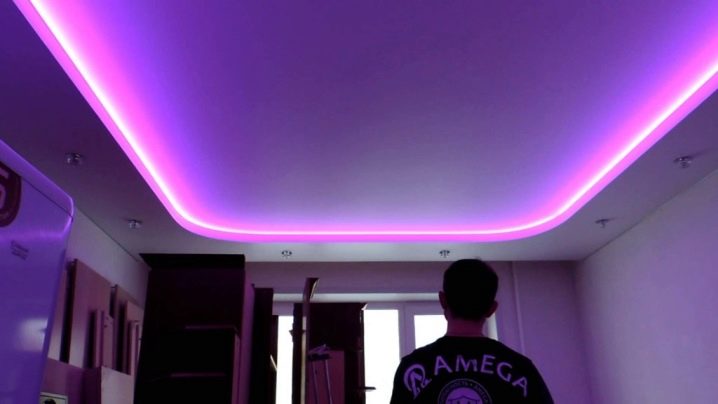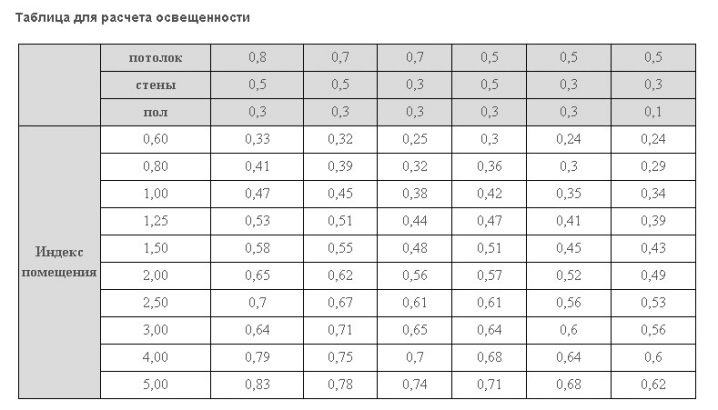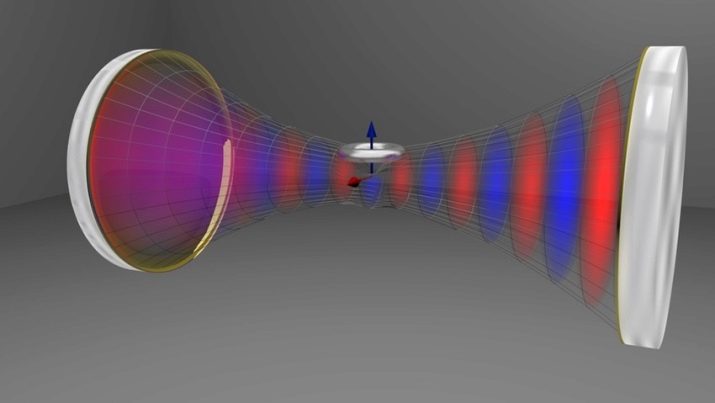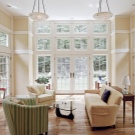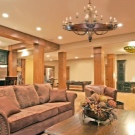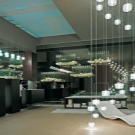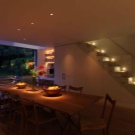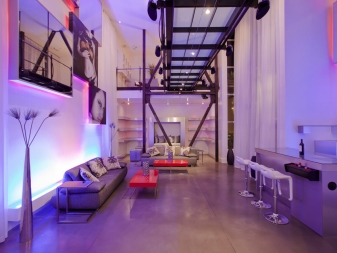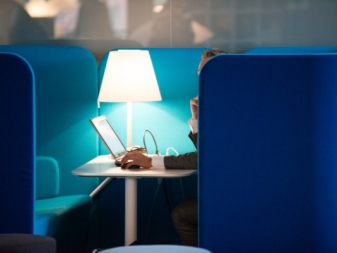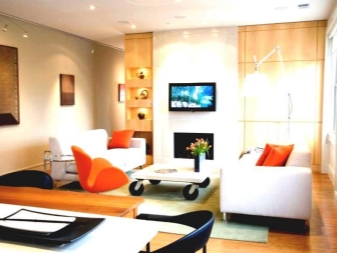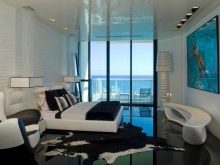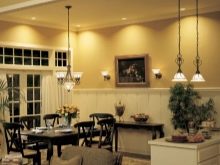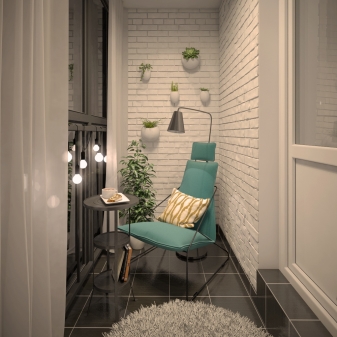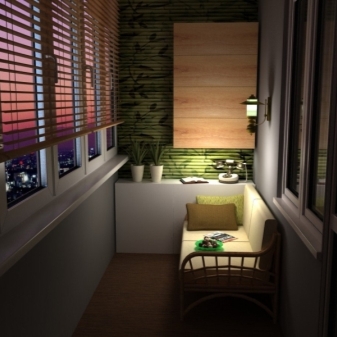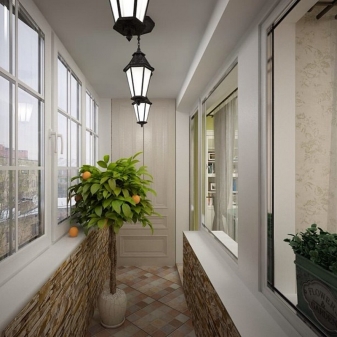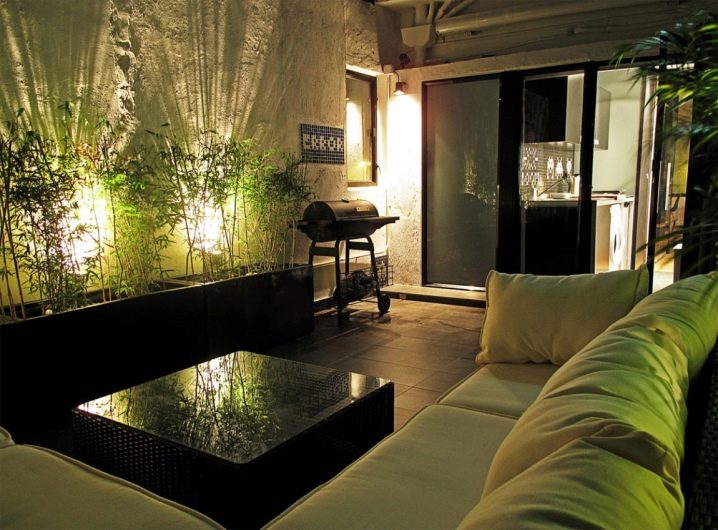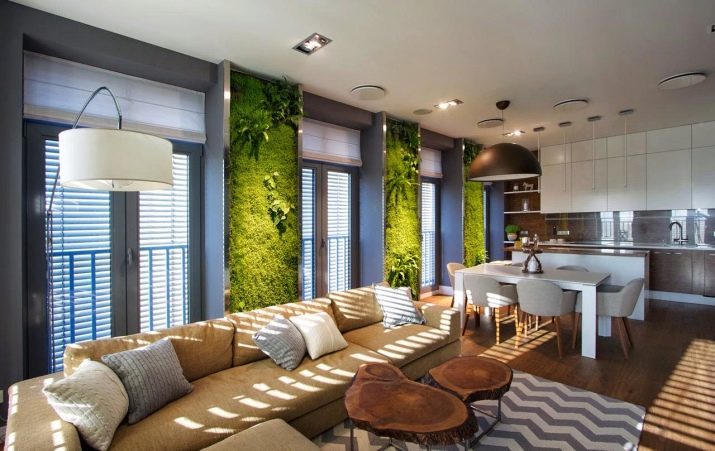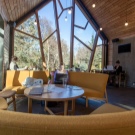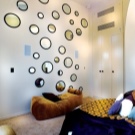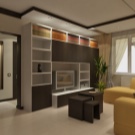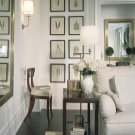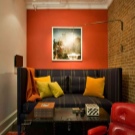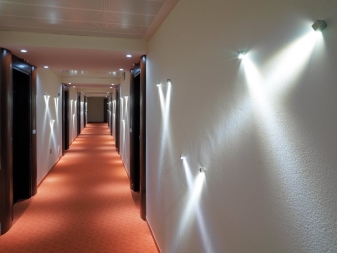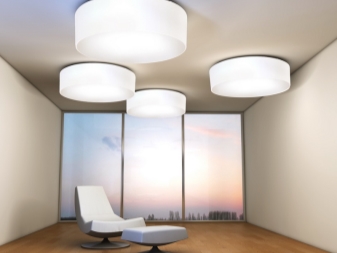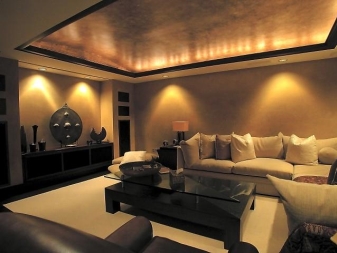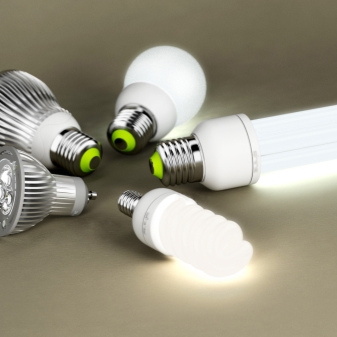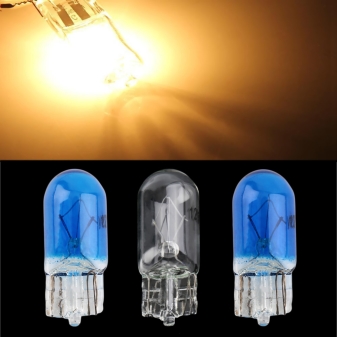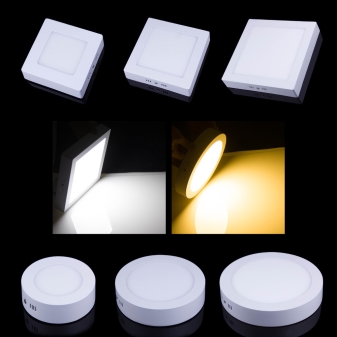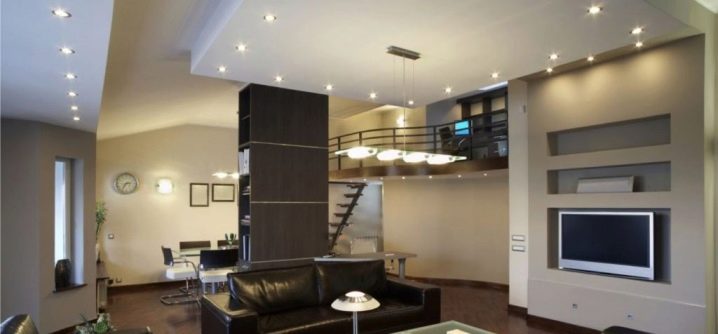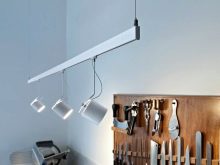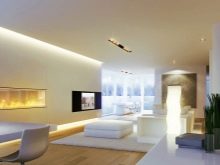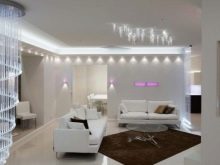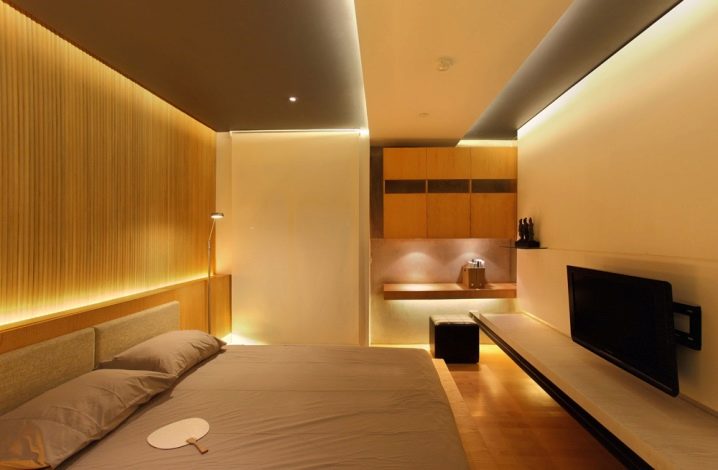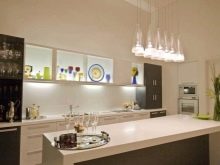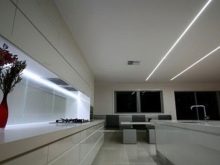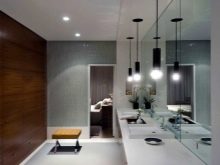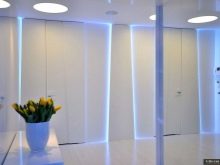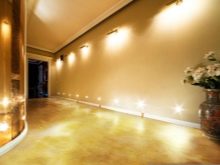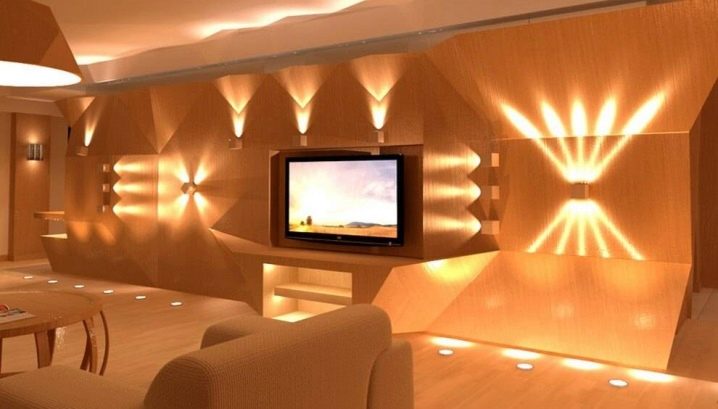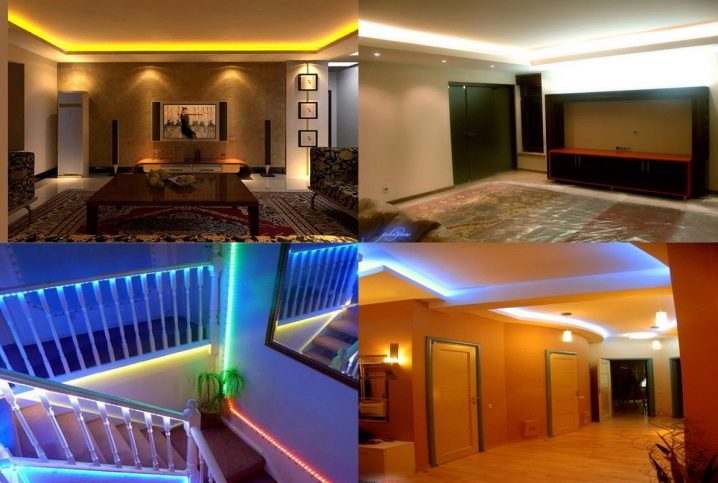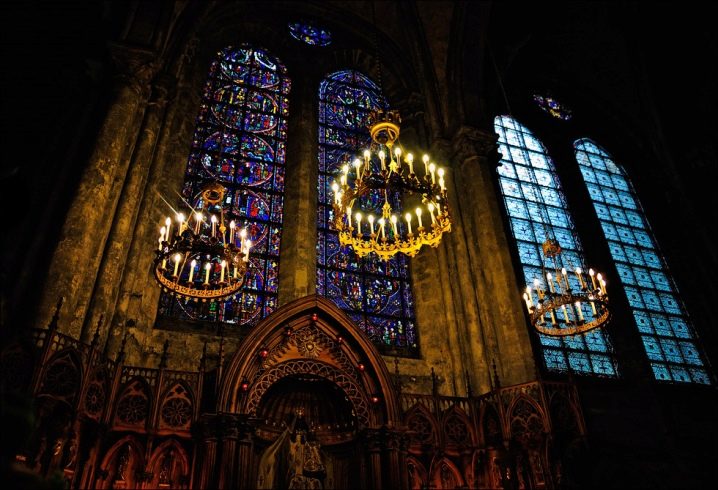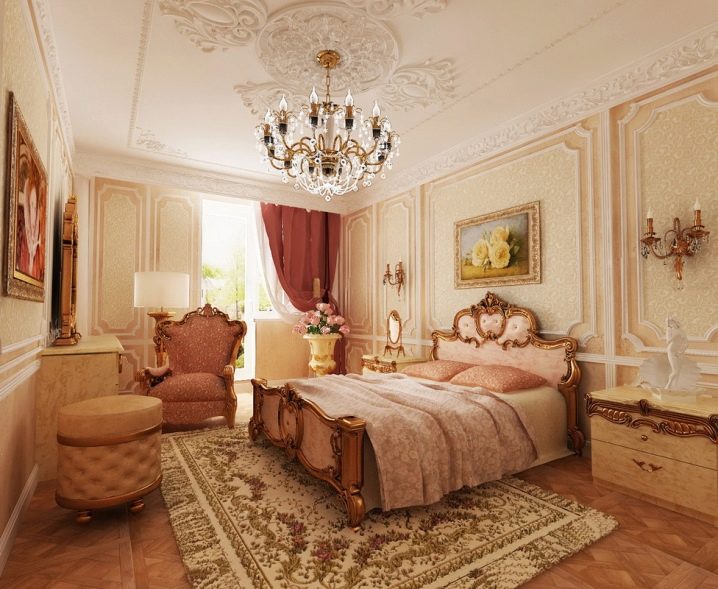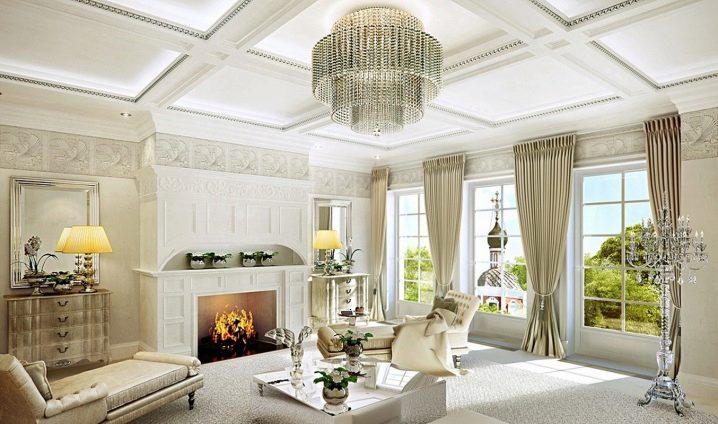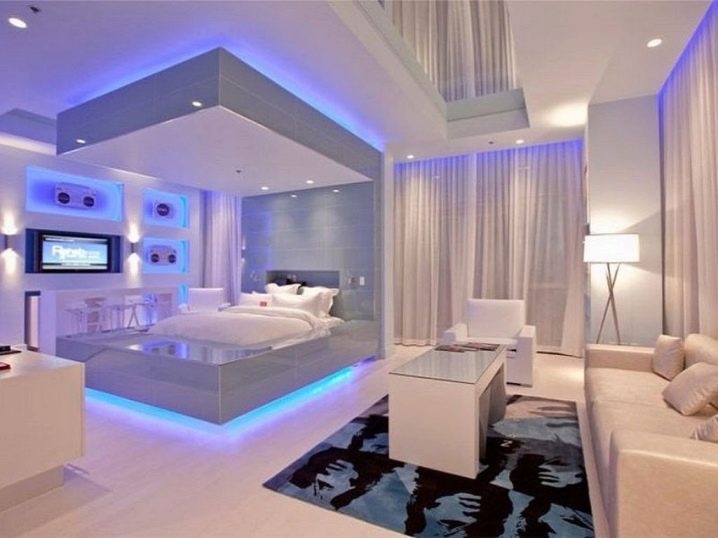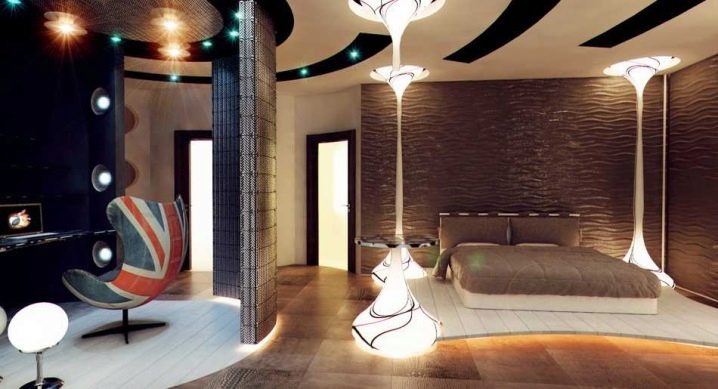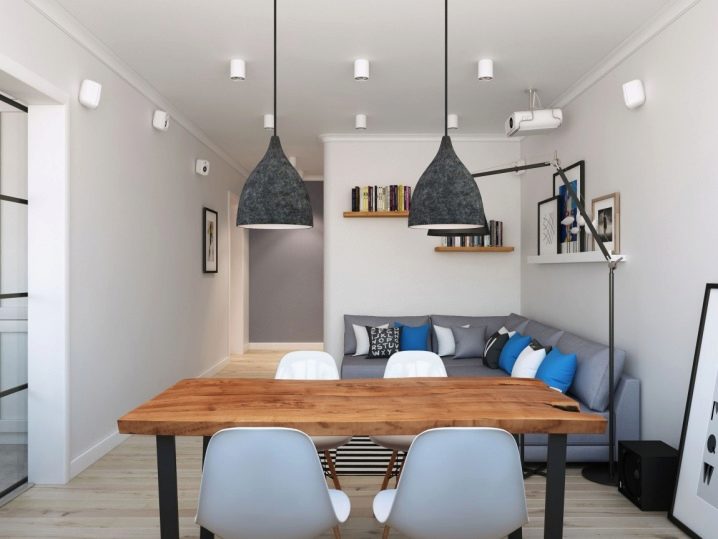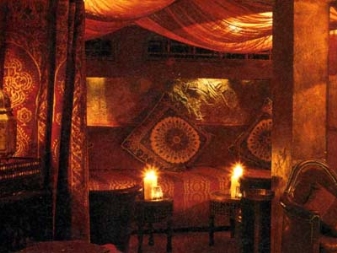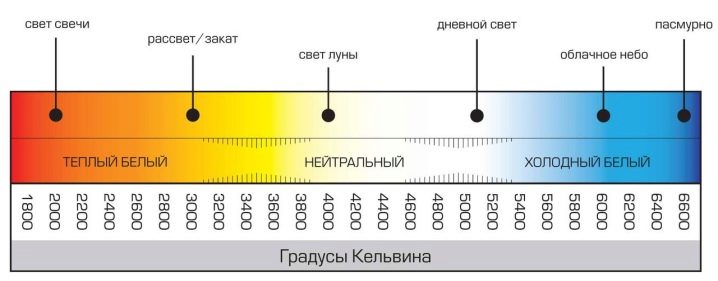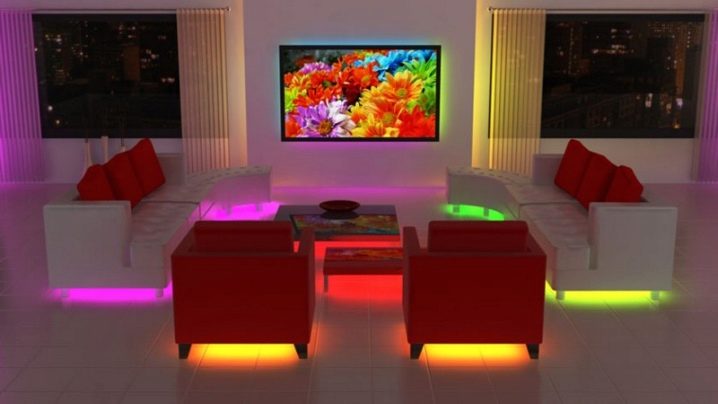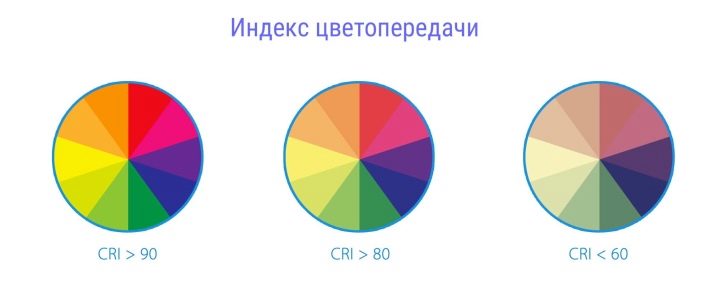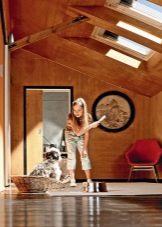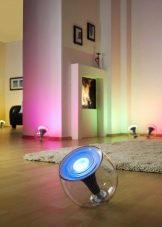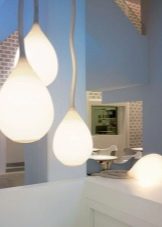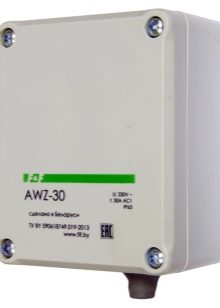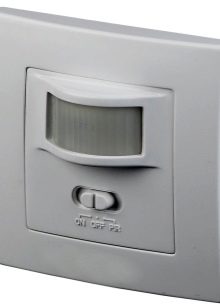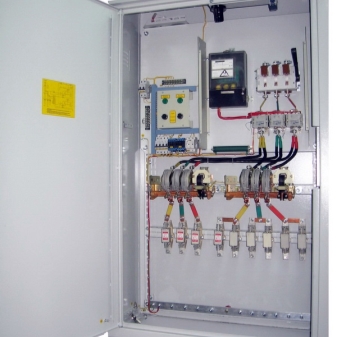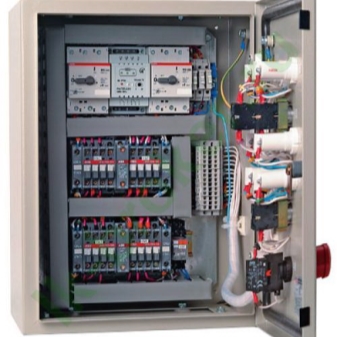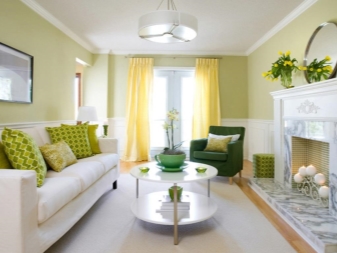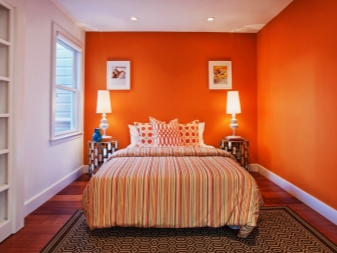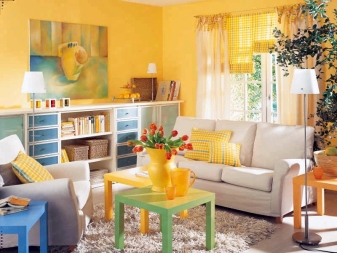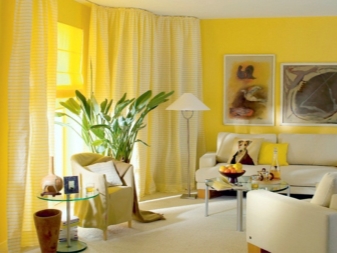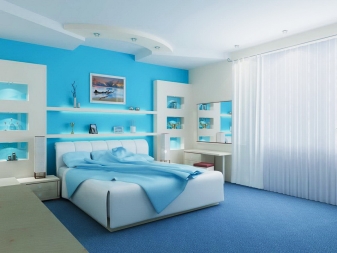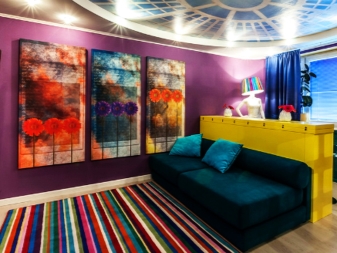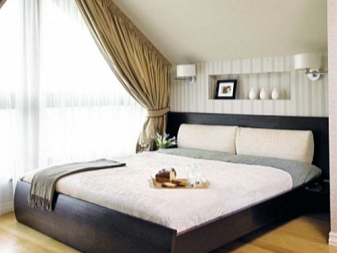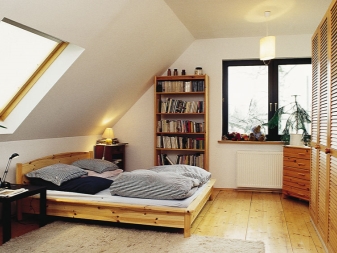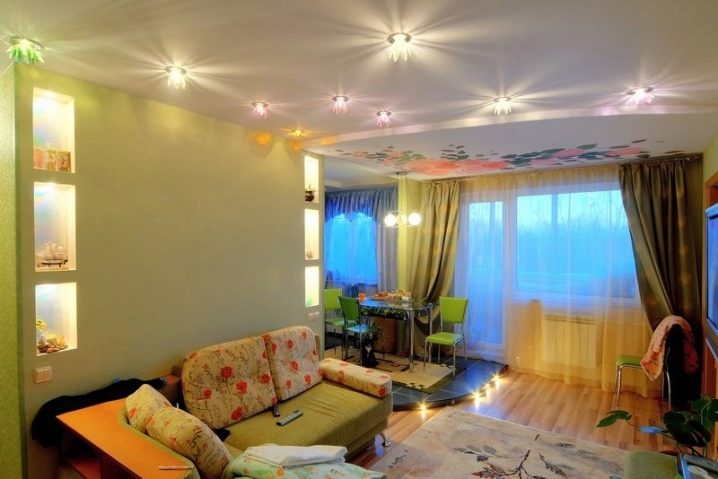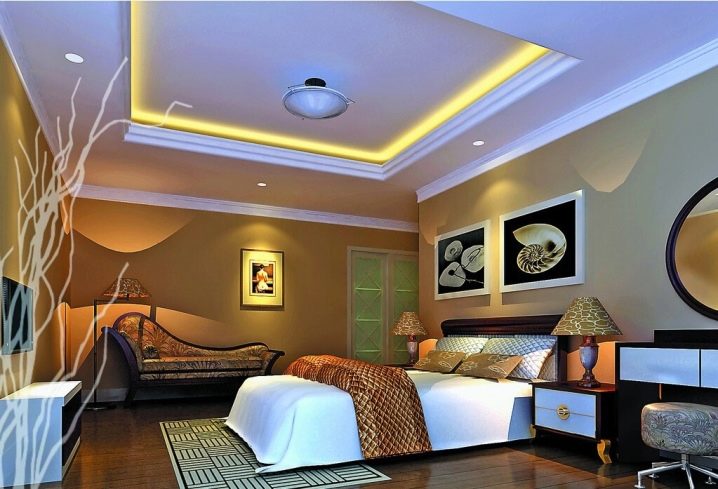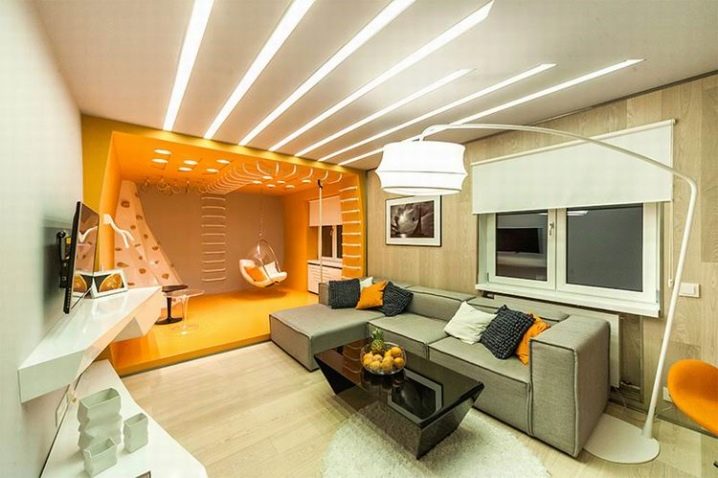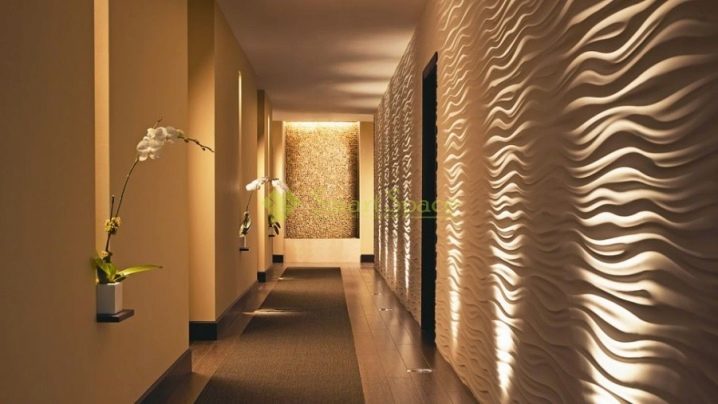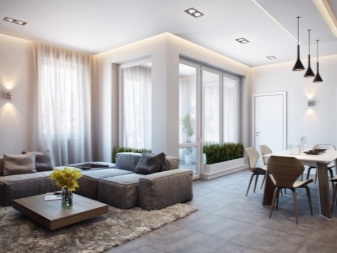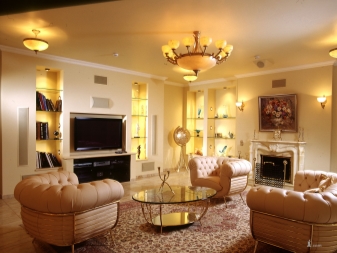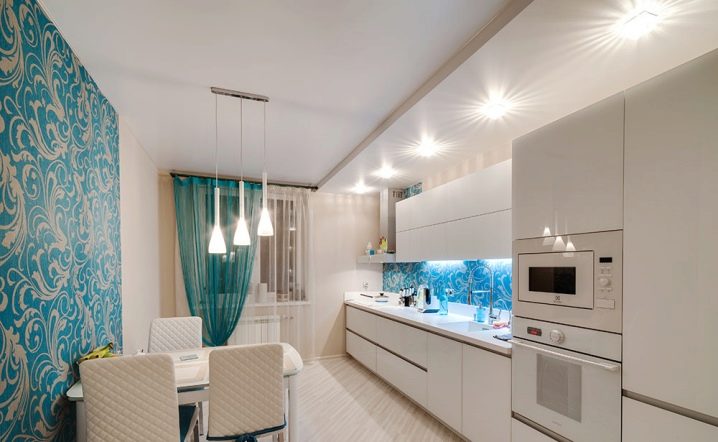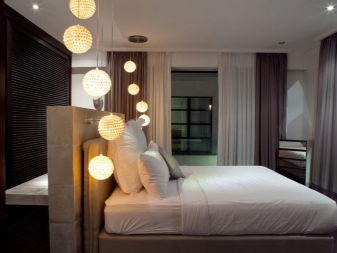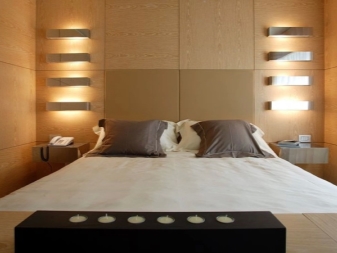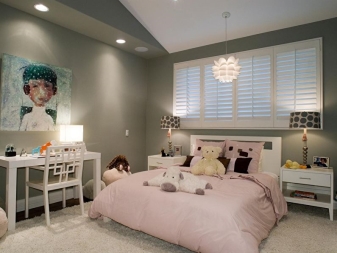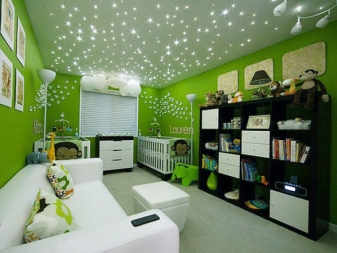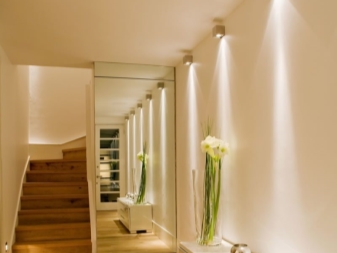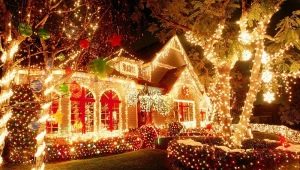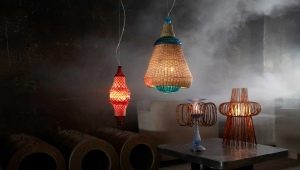Interior lighting in the interior
Lighting is an important component of any interior. With it, you can unrecognizably change any room, create volumetric effects, change the visual perception.
Special features
If the norms of illumination in the room are observed, the person is comfortable in it, he is less tired and feels better. Bright or, conversely, dim lighting has a negative effect on the human body. The level of illumination depends on the room and the position of the light source. It is measured in suites. And the flow rate is in lumens. Its value can be found on the packaging, measured with the help of special devices (instrumental method) or calculated independently (geometric). A light source with a flux of 1 lumen creates an illumination of 1 lux on one square meter.
The consequence of exceeding the indicators may be:
- Unpleasant sensations in the eyes (dryness, stinging) and redness of the mucous membrane;
- Excitation of the nervous system, irritability, muscle tension.
If standards are reduced, first of all suffer:
- organs of vision (up to the appearance of farsightedness and myopia);
- the psychological state worsens (this can lead to manifestation of various kinds of depressions, neuroses, relapses of already existing diseases);
- as a result of prolonged exposure, hormonal failure is possible, which leads to disturbances in the endocrine and other systems of the body.
Therefore, lighting standards must be carefully monitored. If a person feels well and does not notice changes in mood or body, then the luminous flux norms are observed. For different rooms they differ:
- on the stairs - 20;
- in the bathroom - 50;
- in the back rooms, corridor, hall, storeroom - 50;
- in the dressing room - 75;
- in the bedroom, living room, kitchen - 150;
- in the baby room - 200;
- in a study, library, room with a computer - 300.
To find out whether an indicator of illumination in a particular part of an apartment is in compliance with building codes, it is necessary to:
- Multiply the rate for this room by the area indicator.
- The indicator of the light flux of each light source multiplied by their number.
- Compare these two values.
- Make a conclusion. If excess or deficiency is present, then some adjustment must be made. For example, reduce or increase the number of light sources or choose for each of them a smaller (larger) power, respectively.
Given these features, you can create optimal conditions for work and rest and eliminate additional threats to health.
Kinds
Light in the form of electromagnetic waves, visible by the eye and transformed by a visual analyzer, is an indispensable condition for the life activity of people. Internal (that is, used in the premises) lighting is divided into:
- Natural - radiation of the sun and its diffuse reflection in the atmosphere;
- Artificial - radiation of various devices that can convert different types of energy;
- The common is a combination of the natural and the artificial;
- Zone - to illuminate a certain area of the living space;
- Decorative, acting mainly in the role of decoration.
Natural has a number of the following positive characteristics:
- profitable from an economic point of view, as it allows more efficient to spend not only the energy resources of the Earth, but it is also advisable to distribute funds of an individual person or family;
- most suitable for organs of vision;
- does not cause discomfort inherent in certain electrical devices.
Sources of light are natural objects or phenomena, such as the sun and other space objects (comets, stars, interstellar gas), aurora, lightning, bio- and radio luminescence.
To determine whether the lighting meets the requirements of SanPiN, it is necessary to calculate the ratio of the internal to external illumination. The resulting coefficient and should be a kind of evaluation criterion. Depending on the location of the holes for the penetration of such lighting there are the following types:
- side (it includes window and door openings);
- top (direct and scattered rays enter the room using a transparent roof and rooflight lanterns, which can be made in a pyramidal, hemispherical shape or in the form of a transparent dome);
- mixed (combined).
A significant disadvantage of such lighting is its unevenness depending on:
- climate;
- time of year and day;
- clouds and atmospheric conditions.
And if we are not able to change the weather, but a change in geographical location due to the move seems to be a radical decision, You can use some of the recommendations:
- First of all, redevelopment of the premises is necessary - demolition of partitions, expansion of openings and aisles, replacement of transparent floors and wall panels with transparent ones. This requires a certain coordination in special organizations and the investment of additional funds.
- Less expensive and time consuming will be the replacement of a deaf canvas balcony, interior and entrance doors on the canvas with plastic or glass inserts in full growth or in part.
- Balcony structures should be replaced with new ones with higher permeability.
- If we are talking about a private house, you can reduce the height of the fence or make it through.
In addition, it often happens that the causes of blackout in the room can be closely spaced shrubs or trees. In this case, you can mow the crown, cut branches or remove part of the trunk or the whole.You should not do this on your own, as administrative responsibility can follow. Contact your management company or state housing inspectorate. You can call experts from the SES and ask for an opinion on your apartment. The same should be done if you are not satisfied with other temporary buildings in front of your windows. With permanent buildings, such as residential buildings, it will be almost impossible to change the situation.
Artificial lighting is a complex system of devices that includes all the lights in the house. The main feature of such light sources is that they are created by man. In addition, they differ from natural ones by the length and color of the emitted waves. Nevertheless, they are quite comfortable for the organs of vision, while observing all the rules and regulations. Their main advantage is independence from temporal and spatial factors, that is, it can be used both at night and during the day, in any weather and in any geographical position.
There are several ways to organize artificial lighting:
- directional (illuminates a specific area plot);
- reflected from the surface;
- diffuse (evenly distributed in different directions, for example, a regular light bulb without a lampshade);
- mixed (for example, a device with three multidirectional lamps).
The main component of artificial lighting - the lamp. They can vary in shape, size, amount of energy consumed, radiation power. Thanks to the latest technical developments, all new species with improved characteristics appear. However, the main varieties are:
- Incandescent lamps - a classic version, most often used at home. Their popularity is due to reasonable price and ease of manufacture and use.
- Halogen - differ from ordinary incandescent bulbs in that they contain a special halogen gas that contributes to a brighter glow.
- LED - their power is limited, so they are used as a local light source. The high price corresponds to the long service life.
- Fluorescent - are a flask with a spray, filled with mercury vapor. In everyday life are less common, as flicker and rustle.
- Energy Saving - Modified Fluorescent Model. Beneficial due to high luminous efficiency, despite the risk of mercury being released when damaged.
The common (it is also called central, or upper) affects a separate room or an entire apartment. It has a number of features:
- The location of the light sources on the ceiling of the room provides uniform illumination;
- The lack of contrasting shadows does not harm health;
- Allows you to combine parts of the room into one whole - in this case, the interior does not look fragmented, but looks like a single whole.
This view can have several options for the location of lamps:
- Suspended (using chandeliers). This is the most familiar option, due to the fact that due to the peculiarities of building technologies on the ceiling, there was only one conclusion for lighting devices. As a rule, it was located in the center. This kind of option is still used, as it helps to avoid material costs. A modern chandelier can have not one, but several lamps and have a rather original shape. This option, though conservative, is still the most popular and affordable.
- Mixed (with chandelier and spotlights) - this option is suitable for a stretch or false ceiling.
- Mortise and overhead (with pinpoint) - they can be located around the perimeter of the room, evenly over the entire ceiling area or in a certain sequence. It is used for tension, hanging, cassette and rail types of finishes.
Zone - affects some specific part of the room. It is usually used in two cases:
- when there is not enough lighting for some specific works (for example, over a desk, a make-up mirror, an element of decor, a picture);
- as a zoning tool, for visual highlighting on a functional basis (to separate the dining room from the kitchen).
Depending on the mounting method - to the wall or furniture, local lamps can be:
- overhead - installed without disturbing the integrity of the surface directly on the furniture, wall or ceiling;
- mounted - using special devices for mounting, take up more space;
- Mortise - characterized by the complexity of installation, but occupy little space at the same level with the surface.
According to the position they occupy in space, they are distinguished:
- wall - mounted on a wall or other partition;
- outdoor - take up more space, but do not require any installation;
- desktop - save space in the room, for their installation does not require special skills.
There are stationary and portable lamps. The latter, of course, more practical, as they can move. For heavy-duty floor models, wheels are preferable. However, due to the design features, they can illuminate a much smaller area.
As a rule, in everyday life lighting in its pure form is extremely rare. Basically, the species are combined depending on the needs. For example, the general is complemented by local. This is the only way to create a comfortable and cozy atmosphere in the house. Decorative lighting was previously considered an excess, as it usually does not bear any functional load. Currently, it is given much more importance, since the desire to stand out prompts to find more and more original design solutions. Since this requires a certain cost, this method of registration can not be called often used.
The purpose of any decor is to make the room particularly attractive, so the quantitative characteristics of the lighting devices are not important. However, too strong contrasts, bright color boundaries can affect the mental and physical condition of the people living. This implies another feature - such lighting, if it does not meet the standards, should be temporary. In this case, the common can be permanent, it will act as a kind of background.
The sources of light here are:
- LED and neon lamps;
- light cords;
- illumination of stained glass windows, niches and eaves.
If the tenants have creative abilities, it is possible to make decoration on their own, since the devices listed above do not require complicated installation. Especially effectively such lighting looks at night without background lighting.
Design and Forms
With the help of properly organized lighting can be transported to a particular era. Middle Ages with Gothic style is more suitable for spacious rooms. Their distinctive feature was a special form of door and window openings and wrought iron lamps.The reflected light from the stained glass creates an extraordinary visual effect. In modern interpretation, it is not necessary to use candles, as there are lamps of a special shape.
Baroque uses chandeliers and wall lamps without plafonds, since their main goal, in addition to decorating the room, is to light up rather large-sized apartments. Gilded, silver-plated, brass, copper metal curved parts and processed glass are used as decor.
Classicism more restrained regarding decor. Beautiful, correct, straight, clear lines look status and at the same time solemnly.
Modern minimalist the interior, functional and sustained in a narrow color scheme will complement the lamps with opaque or matte shades in the color of the interior. And the ability to change the direction of the light flux will be a practical addition.
Any discreet interior can be revived with decorative lighting. Background illumination can combine spotlights with LED or discharge cords. A striking example of this is the style high tech.
The originality of the forms and the unusual combination of different light sources include eclecticism.
Scandinavian style, the hallmark of which is a bright interior, can be supplemented by overhead or hanging versions, original forms of the ceiling or lamps.
To move in african or eastern interior possible with the help of lighting. The illumination of niches looks especially original - it gives the eastern interior an atmosphere of mystery and refinement. Ethnic stylization will appeal to travel lovers, will always look original and will not leave anyone indifferent.
Color solutions
Do not underestimate the effect of color lighting on a person. It will not cause great damage to health, but it can affect mood, emotions - to relax or, conversely, to invigorate. To find out what color this or that radiation will be, it is enough to pay attention to the packaging. The color temperature is measured in kelvins and is denoted by a capital letter K. To make it clearer, you can use special tables with ranges of these values and corresponding shades.
In everyday life, most often you can find three main ones:
- Warm white with a yellow tint (corresponds to natural sunlight in the morning or in the evening). It is emitted by incandescent bulbs, halogen, fluorescent. It has a calming effect on the nervous system, therefore it is ideal for bedrooms and other recreation areas.
- Neutral white (corresponding to daytime). It can be called universal in its application, as it is well combined with natural sources of light.
- Cool white with a blue tint is more used in offices, schools and other educational institutions. Creates a working attitude, helps to gather, stimulates the brain. For him fit LED and fluorescent lamps.
In addition to the above shades indicated, the light can be of any color. This is achieved in two ways:
- by applying a color spray onto a flask - this applies to all types of lamps;
- for gas-discharge lamps, by pumping various gases into the tube or flask that can emit rays of different intensity.
Another important indicator is the color rendering index. It is not indicated on all products, but if you do not attach importance to it, you can get an unpleasant distorted light.Low rates (less than 80) turn bright colors into dull, dirty with a gray tint.
Light control
A huge number of electrical appliances and devices in need of proper organization. The development of electronics has led to the fact that such devices are now controlled by special devices. Of course, it is necessary to think about how this process will be carried out at the repair stage. This will require some financial costs, perhaps physical effort and time, but a well-thought-out management system will compensate you for these efforts. And about the meaning of comfort in everyday life, when even minor, ill-considered trifles will interfere with daily rest, and there is nothing to say. So, management is of two types:
- local;
- remote
Local is carried out by switching devices, which are usually located inside houses, near the entrance or exit, and sometimes outside. Such devices are switches, touch controllers, knife switches.
Switches are divided into:
- ordinary;
- photo relay;
- with motion sensors.
You can meet management from several places (most often two or three).Such switches are called crossover or walk-through. The advantage of such a system is its practicality, convenience and economy of electricity. For example, if a room is a passageway, it is wiser to place one switch at the entrance, and the second at the exit. Or place them near the door and the places where the person is resting or sleeping. Moreover, one device can control a group of lamps or just a specific one. In addition to the above, management can be of two types:
- manual (impact is carried out directly by tenants or hired workers);
- automatic (this happens independently of people using a timer or sensors that react to changing the time of day, movement).
Remote control is provided by special equipment, which can be located at a considerable distance. It is divided into:
- controlled from the switchboard;
- wired with devices;
- wireless - using various control panels, radio switches or devices with special software (smartphones, tablets, computers, etc.).
The main advantage of such systems is the ability to control from anywhere in the room or apartment.And with the help of the World Wide Web - even from another country. In fact, it is also the most vulnerable point, because without a remote control or a smartphone, it will be simply impossible to affect the lighting in the house.
We take into account the type of room and its decoration
When choosing the finish of the ceiling, walls and floor, first of all it is necessary to take into account which side the windows face. If to the north, then the interior should be dominated by bright warm colors (they have the best reflectivity). Textile, embossed surfaces and warm soft light will create an atmosphere of comfort.
If south or west, then you can use any color, including the cold spectrum. In the bright interiors especially need to monitor the distortion of colors. For example, warm yellowish radiation can give a blue hue to a green color.
To improve the natural lighting of the attic floor with sloping walls and other darkened rooms, you can use transparent walls or, in the case of a wooden private house, a glass roof. This idea applies not only to the attic, but also to other darkened rooms.
For rooms with a low ceiling, you must use the mortise and overhead lights.If the chandelier is still used, make sure that it is at a sufficient distance from the floor. Special design requires a sloping ceiling. Of course, the spotlights will be more convenient, but if you chose a chandelier on the bracket, for aesthetics it is necessary to ensure that they are on the same level.
Suspended multi-tiered ceiling, as well as niches in the walls will look particularly impressive with light. With the help of local lighting (for example, light cornices, wall sconces, table lamps) you can make a zoning of a studio apartment.
Properly organized interior lighting can drastically change and even expand the space of an apartment. This requires light, preferably glossy surfaces that will reflect light. Lamps in this case should be multidirectional, with transparent shades, and better without them.
Tips for choosing
To determine which light source is needed in a given room, it is necessary to determine what functions it will perform. If such sources are electric lighting devices, then it is necessary to draw up a detailed scheme.Moreover, if such products will be several. There are several options:
- If zoning is necessary, you can use a large number of lamps - table, floor and wall sconces. The main thing is that they all be made in the same style and fit into the interior.
- If the room is small and does not need local lighting - with one large lamp.
- Mixed. And he can combine as several lamps on the ceiling, and their division into levels. This option allows you to include a certain level, part of the devices or all devices together.
The second caveat that you need to pay attention to is the ability to install your chosen fixtures. Not all ideas can be implemented due to technical characteristics (for example, inconsistencies of wire and cable cross-sections). Since the features of installation, use and management of each species are different, it is better to consult a specialist with this.
It is important to maintain a balance between aesthetics and practicality. To do this, consider the approximate versions of how the lighting may look in different rooms.
In the living room just apply a multi-level scheme.When the whole family comes together or when meeting guests, all devices will be used. If there is no need for such a festive illumination, you can leave some part included.
In the kitchen, in addition to the background light, the lighting above the work surface is obligatory. In addition, you can highlight the decorative lighting bar area. If the table is in the kitchen, the main source of light should be placed above it.
For the bedroom use hidden light, bedside lamps, wall sconces. This will create a special atmosphere and help you sleep, relax or unwind.
Children's room fit lamps, closed with matte or opaque lampshades. Here aesthetics are preferable to safety and practicality, as well as compliance with all regulations and standards. If the child has already gone to school, it is necessary to place additional electrical appliances near the desk.
The entrance hall is a peculiar face of the house, so it is especially important that the lighting be spectacular. On the stairs for safety, it is better to place emergency lights on batteries or rechargeable batteries.
The master class on creating lighting in the interior, see the following video.
